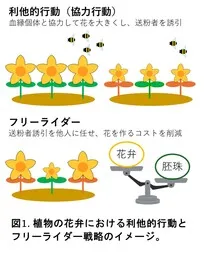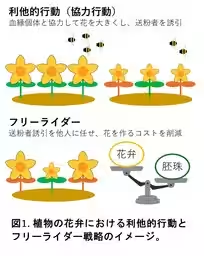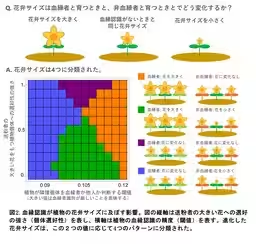

Research Unveils Conditions for Plant Flower Size Evolution with Kinship
Unraveling Plant Behavior through Kinship: A Study on Flower Size Evolution
A persistent question in plant biology has been how kinship affects the evolutionary traits of flowers. A recent research collaboration among scientists from Tokyo Metropolitan University and Kyoto University has delved into this mystery, unveiling compelling revelations about the growth of larger flowers when plants are nurtured alongside their relatives. This study not only throws light on altruistic behaviors in plants but also presents an unexpected twist — the emergence of strategies that could be interpreted as self-serving.
Background of the Study
Plants, often thought of as passive organisms, show surprising complexity in their social behaviors. Similar to social animals like ants, which recognize kin and cooperate within colonies, it's becoming increasingly evident that plants may also possess a form of kin recognition. Previous studies indicated that plants tend to allocate resources more efficiently when raised with relatives, thus reducing competition for water and nutrients. This burgeoning field of plant kin recognition had largely centered around resource allocation but left a gap concerning reproductive traits, particularly flower size.
For example, findings noted that members of the mustard family exhibited larger flowers when grown alongside relatives as opposed to non-relatives. Previous interpretations suggested that this was indicative of altruistic behavior aimed at enhancing pollination rates for surrounding kin. However, considering the high costs involved in producing larger flowers raises questions regarding the underlying motivations of such plants.
Key Findings of the Research
In this groundbreaking study, the researchers employed evolutionary simulations that spanned thousands of years of plant evolution, focusing on the intricate dynamics of flower development. Their results revealed three main insights about the evolutionary pattern of flower size in relation to kin: 1) Altruistic actions towards relatives that encouraged larger flower sizes; 2) A 'free-rider strategy' where flowers remain smaller when growing with non-relatives, diminishing costs in flower production; and 3) A combination of both altruism and free-riding behaviors.
The emergence of these behaviors hinges significantly on two factors — the precision of a plant’s kin recognition and the behavior of pollinators interacting with the plants. When kin recognition is strong and pollinators favor large flower sizes, the altruistic traits develop more robustly. Conversely, in scenarios where kin recognition fails or where pollinators show a strong preference for larger flowers, plants may adopt self-serving tactics, leading to reduced flower sizes when growing alongside non-relatives.
Implications of Kin Recognition in Plants
Understanding these dynamics can transform how we view plant interaction and evolution. For instance, the research suggests that larger flowers, which are typically considered advantageous in the context of horticulture, may not be beneficial in all ecological settings. The suitability of such traits is markedly influenced by the relationships and preferences of pollinators. Plants that rely on pollinators with a preference for abundant flower patches may exhibit more prominent altruistic traits because of the heightened visitation they receive.
It's crucial to interpret observations of flower size differences between kin and non-kin groups with caution; understanding that both altruistic and self-serving strategies can coexist brings depth to our comprehension of plant evolutionary biology.
Conclusion
This research not only enhances the understanding of plant kinship dynamics but also widens our appreciation for the evolutionary complexity of these organisms. The interplay of altruism and self-serving strategies highlights the sophisticated adaptations that plants deploy in their survival and reproductive strategies. As floral traits shape interactions within ecosystems, gaining insights into these behaviors can have valuable applications in agriculture and conservation frameworks.
Published Research Details
The study titled "Altruism or Selfishness: Floral behavior based on genetic relatedness with neighboring plants" was authored by Haruto Tomizuka, Yuuya Tachiki, and Ryō Yamawo, and is available in the Journal of Evolutionary Biology, published online on April 21, 2025, under DOI: 10.1093/jeb/voaf015.



Topics People & Culture)










【About Using Articles】
You can freely use the title and article content by linking to the page where the article is posted.
※ Images cannot be used.
【About Links】
Links are free to use.